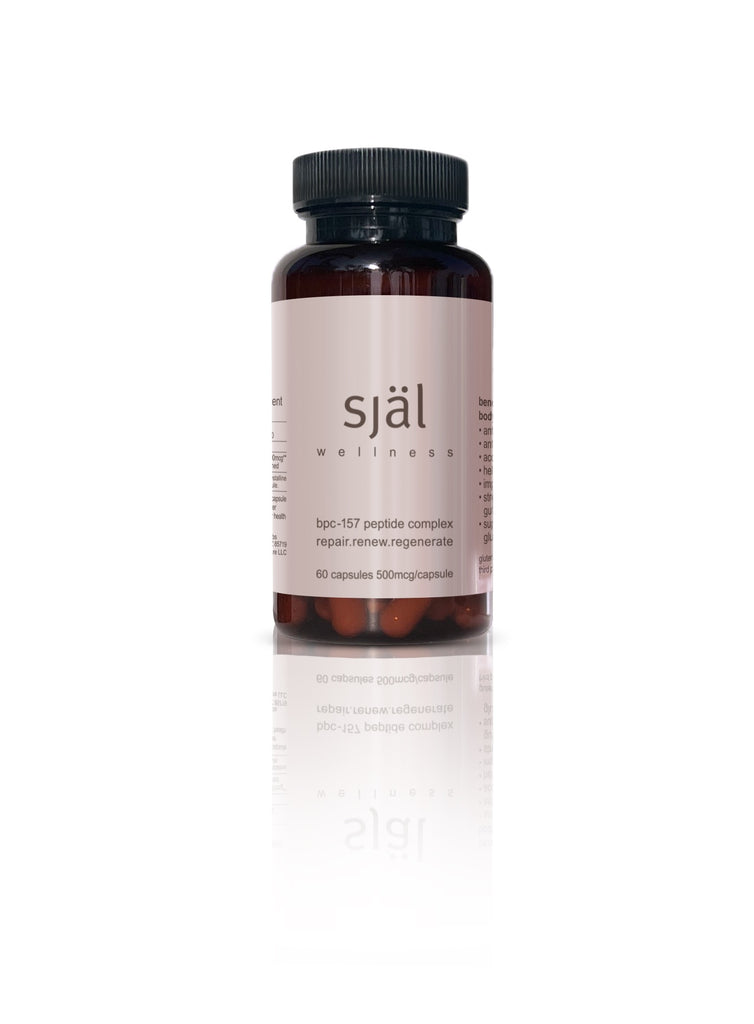Description
What is BPC-157?
BPC-157 is a native gastric pentadecapeptide that is non-toxic and has profound healing potential. Originally discovered in the digestive system where it safeguards the stomach lining from acid damage, it has demonstrated its healing capabilities beyond just the gut. Its wide-ranging therapeutic properties include enhancing healing in various hard and soft tissues, promoting blood vessel growth, improving blood clotting and boosting the immune system.
To comprehend how BPC-157 exerts such diverse effects, it is crucial to delve into its fundamental activities and how they synergistically contribute to its remarkable healing capabilities.
Benefits of BPC 157 Include:
+ Potent anti-inflammatory
+ Possesses neuro-protective properties, specifically modulating the serotonergic and dopaminergic systems
+ Promotes angiogenesis and vasculogenesis
+ Accelerates wound healing (e.g. muscle, ligament, tendon, nerve)
+ Promotes cell survival under stress
+ Maintains GI mucosal integrity
+ Protects and prevents gastric ulcers
+ Improves digestive function (IBS)
+ Used in Inflammatory bowel disease (IBD) exacerbations/flares
+ Protects liver from toxic insults (alcohol, antibiotics, etc) and promotes healing
+ Repairs tissue; such as GIT, tendons, ligaments, brain, bone, etc
+ Effective treatment for Traumatic brain injury (TBI)
+ Protects and heals inflamed intestinal epithelium (Leaky Gut Syndrome)
How Does BPC-157 Facilitate Hard and
Soft Tissue Healing?
Tendon and ligament injuries pose challenges due to limited blood supply, hindering effective healing. BPC-157 demonstrates positive effects on tendon, ligament, and bone injuries in animal models. It enhances the production of growth factors such as basic fibroblast growth factor (bFGF), epidermal growth factor (EGF), and VEGF, which guide cells to the site of injury, accelerating the healing process[5].
Additionally, BPC-157 increases the number of growth hormone (GH) receptors in tendons. This action enables targeted GH action at the injured tendon, without elevating GH levels throughout the body, leading to enhanced musculoskeletal development and immune function[6].
- Cell Survival and BPC-157
In vitro experiments show that fibroblasts survive for longer in the presence of BPC-157. Fibroblasts survive about 1.5 times longer when BPC-157 is present[6]. Those cells also tend to be healthier and more active, in turn more capable of carrying out their repair roles.
- Fibroblast Outgrowth and Migration
Fibroblasts are motile cells found in most connective tissue (bones, tendons, muscle, gastric mucosa, skin, etc.). When damage to tissue occurs, fibroblasts migrate to the site of injury in order to start the repair process. They also divide and reproduce to increase the number of fibroblasts available for tissue repair.
In vitro studies show that migration of fibroblasts is directly affected by the amount of BPC-157 present. Where higher levels of BPC-157 are found, higher amounts of fibroblasts can also be found.
Evidence shows that BPC-157 doesn’t just attract, but that it actually causes fibroblasts to migrate nearly 2.5 times faster than normal. Not only do the cells migrate in response to BPC-157 levels, they reproduce in response to them as well. Fibroblast outgrowth is approximately three times higher in the presence of BPC-157[13].
- Fibroblasts and Genetic Modification
Animal test studies show that BPC-157 controls the functions of collagen fragments by promoting the work of fibroblasts, the cells responsible for collagen deposition and maintenance. These studies have revealed that BPC-157 influences fibroblasts by upregulating expression of the GH receptor gene. In other words BPC-157 alters the function of DNA.
Fibroblasts are found all throughout the body, and are especially active in connective tissue. BPC-157 boosts the GH response by increasing GH receptor density to the injured connective tissue. The result is that even with normal physiologic levels of GH, more is recruited to the site of injury causing healing to proceed at a faster rate. Ongoing testing and research is revealing more and more beneficial effects of BPC-157.
How Does BPC-157 Promote Blood Vessel Function?
Studies reveal that BPC-157 operates through two distinct mechanisms within blood vessels. Firstly, it aids in vasodilation, facilitating smoother blood flow, by elevating the levels of nitric oxide, a natural compound. Nitric oxide not only helps regulate blood pressure but also maintains the health of endothelial cells that line blood vessels.
Secondly, BPC-157 directly stimulates the growth of endothelial cells, thereby promoting blood vessel formation[1],[2]. It achieves this by increasing nitric oxide production within blood vessels and activating the vascular endothelial growth factor (VEGF), a growth factor that triggers endothelial cell division and growth. These findings suggest that BPC-157 induces favorable alterations in DNA expression patterns, supporting blood vessel growth and overall vascular health.
How Does BPC-157 Aid in Wound Repair?
BPC-157 accelerates wound healing by restoring blood flow to damaged tissues. This effect is observed in various tissues such as the stomach, heart, tendons, and skin. The peptide enhances blood vessel growth towards the site of injury, increasing blood circulation. Additionally, BPC-157 stimulates the migration of fibroblasts, cells responsible for generating the extracellular matrix crucial for initiating wound healing.
The peptide's ability to expedite wound repair is exemplified by its effectiveness in healing fistulas, which are notoriously difficult to treat. While traditional methods may take over two and a half years, BPC-157 achieves healing within a month in animal models[1],[3],[4].
References
[11] “Wake Forest University Publishes Mechanism of Action Reseach.” H-Wave, 5 Oct. 2009, www.h-wave.com/blog/wake-forest-university-publishes-moa-reseach/.
[12] “Figure 3 the Physiological Roles of Nitric Oxide on Endothelial Function.” ResearchGate, www.researchgate.net/figure/The-physiological-roles-of-nitric-oxide-on-endothelial-function_fig1_267335644.


